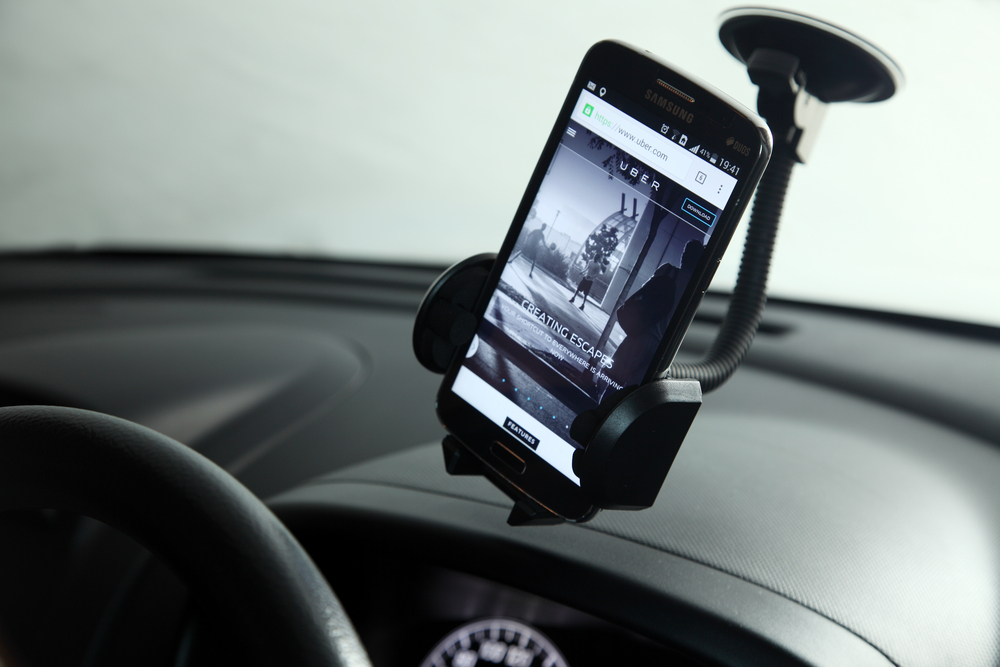On 21 May 2017, Wong Mei Yan, 26, was robbed by her Uber driver when she booked a ride home through the popular e-hailing app. Even more unfortunately, Wong, who was over a month into her pregnancy, suffered a miscarriage about a week after the incident. Such incidents are thankfully rare, but if you’re a victim, even once is too much.
Although ride-hailing apps can be extremely convenient and affordable to use, they also raise a crucial question on rider safety since the drivers are practically strangers to them. In fact, according to an article by The Star, the government might step in and take matters into their hands in the near future by vetting through the e-hailing drivers themselves. Government agencies like the Road Transport Department (JPJ) and police will be conducting the screening, and they will cross-check the drivers’ backgrounds against their own database.
Until the proposed bills are passed, we as users have to find ways to secure our safety. Here are eight tips to help you stay safe when using ride-hailing apps:
1. Know your driver
Once a driver accepts your request, you’ll be able to see the driver’s full name, photo, license plate number, and type of vehicle. All if this information is important for you because it is intended to prevent riders from getting into a car with a ‘fake driver.’ So, ensure all the information matches your driver before stepping into his or her vehicle. Also, you can even ask the driver’s name once again when you open the car door. I know this can be slightly annoying but better safe than sorry, right?
2. Heed the driver’s rating
Always check your driver’s rating before agreeing to hop in his (or much more rarely, her) car. Apps like Uber and Grab have a rating system for their drivers now and this makes it easier for the rider to decide if they want to proceed or cancel their booking. This system encourages better service from the driver and better behaviour from the riders themselves. So, the next time you book a ride on Uber or Grab, be sure to check your driver’s rating – and rate them after the ride as well so that other riders can get a heads-up in the future.
3. Be vigilant
As a young child, your parents probably taught you the importance of being aware of your surroundings. It can be tempting to keep your eyes glued to your phone throughout your ride, but always be mindful of the road – and the driver, as well. If you sense something is amiss, quickly call the 999 emergency number for help.
4. Trust your gut feeling
Always, always trust your gut feeling. If you get a dodgy vibe from your driver, it’s perfectly acceptable to not go on the ride. But, if you’re already in the vehicle and feel something is just not right, then feel free to end it and get out of the car or call someone for help. Also, make sure the car door is unlocked at all times for an easy and quick escape, should the need arise.
5. Update your loved ones on your whereabouts
Once you’ve received all the information about your driver, it’s wise to share those details with your loved ones. This includes the estimated time of arrival and the specific route you will be taking on your trip. You can send a screenshot of your booking page with the driver, car, and route information to a friend or family member. You might even want to call and have a brief chat with them so your driver knows that someone is expecting you home by a certain period of time.
6. Wait indoors until the driver arrives
Since the ride-hailing apps alert the riders when the driver arrives, it’s best to stay indoors, whenever possible, until the ride arrives, especially if you intend to travel during the night. As we all know, the city can be dangerous at times, especially if you’re a woman. It’s always worth making an effort to minimise the risk of inviting danger. Be sure to check your surroundings before you hop into the vehicle and always have the driver drop you off in a public, well-lit area.
7. Don’t flash your personal belongings
Once you’ve entered the car, make sure you keep your personal belongings close. Showing what you own only attracts unnecessary attention. Apart from that, keeping your stuff close also makes it easier for you to grab your things and leave quickly, in case you need to end the ride abruptly.
8. Choose your seat
Finally, there are mixed reports on whether it’s better to sit in the front or rear seats when travelling alone in an e-hailed ride. In Malaysia, many drivers are keen to have their riders sit in the front, so as not to ‘advertise’ to taxi drivers that they are a Grab or Uber driver. (There have been instances of taxi drivers acting belligerently – or even violently – towards Uber and Grab drivers.) Riders, however, sometimes prefer to sit in the back. Of course, the drivers can also be as wary of riders as riders are of drivers, so if you do sit in the back, which may be better for your safety, sit on the left side (behind the front passenger seat) rather than directly behind the driver, which is ostensibly better for the driver’s sense of safety.
As a whole, ride-hailing apps are generally quite safe. These apps help us get around in the most quick and convenient manner. Many readers have doubtlessly used these apps before and had a pleasant experience with them. But just like walking in the city at night – which is also generally safe to do – necessitates a little precaution for added safety, so too does hailing a ride from a stranger. All in all, it just makes good sense to be aware, be proactive, and have a plan. Follow these tips to reduce your chances of being a victim.
"ExpatGo welcomes and encourages comments, input, and divergent opinions. However, we kindly request that you use suitable language in your comments, and refrain from any sort of personal attack, hate speech, or disparaging rhetoric. Comments not in line with this are subject to removal from the site. "





















